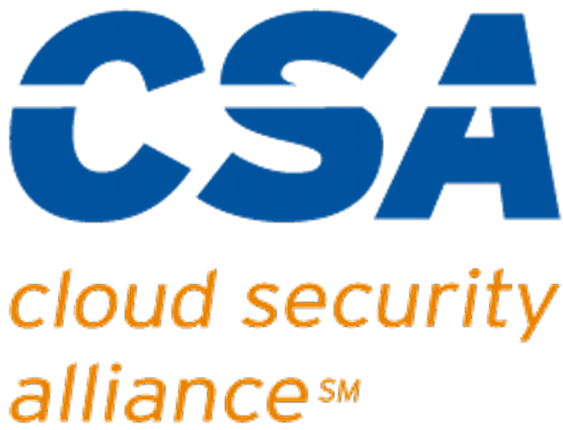“We’re too small for hackers to care about us.”
If you’ve ever had this thought, you’re not alone. Many small business owners assume cybercriminals only go after the big fish – the Fortune 500 companies with massive data stores and deep pockets. Unfortunately, this common misconception is precisely what makes your business more vulnerable.
The reality? Small businesses aren’t just on cybercriminals’ radar – they’re in the crosshairs. According to recent cybersecurity reports, 43% of all cyberattacks specifically target small businesses, with ransomware becoming increasingly prevalent. What’s more alarming is that 60% of small companies go out of business within six months of a successful attack.
At Datacate, we’ve seen firsthand how ransomware can devastate small businesses that thought they weren’t worth targeting. Let’s explain why your business might be more attractive to attackers than you think – and what you can do about it.
Why Cybercriminals Love Small Businesses
1. The Path of Least Resistance
Imagine you’re a thief looking to steal something valuable. Would you target the fortress with armed guards and security cameras or the house with unlocked doors and windows? For cybercriminals, small businesses represent that unlocked house.
While large enterprises invest millions in cybersecurity teams, sophisticated tools, and regular security audits, small businesses often operate with minimal IT resources. Limited budgets mean outdated systems, irregular updates, and security that’s “good enough” rather than robust.
2. The Economics Make Sense (For Criminals)
Here’s the brutal math from a criminal’s perspective: attacking five small businesses that each pay a $20,000 ransom is often easier and more profitable than targeting one large corporation with advanced security that might pay $100,000.
Small businesses typically can’t afford extended downtime and often lack proper backups, making them more likely to pay ransoms quickly. Cybercriminals know this and set ransom amounts that are painful but potentially payable – just enough that paying seems easier than rebuilding from scratch.
3. Your Business Data Is More Valuable Than You Think
“We don’t have anything worth stealing” is another dangerous myth. Every business handles valuable data:
- Customer information and payment details
- Employee personal and financial information
- Proprietary business data and intellectual property
- Access to business bank accounts and financial systems
This data represents multiple revenue streams for attackers: they can demand ransom, sell the data on dark web marketplaces, or use it for identity theft and fraud.
4. Small Businesses Are Gateways to Bigger Targets
If your business serves larger companies as a vendor, supplier, or service provider, you’ve got a target on your back. Cybercriminals increasingly use smaller businesses with weaker security as entry points to infiltrate their larger partners – a strategy known as “island hopping.”
Remember the massive Target breach in 2013? Attackers didn’t directly hack Target; they compromised a small HVAC vendor with network access to its systems.
The Real Cost of Ransomware
The financial impact of ransomware goes far beyond any ransom payment. For small businesses, the actual cost includes:
- Business downtime (averaging 16 days for small businesses)
- Data recovery expenses
- Emergency IT support
- Damaged reputation and lost customers
- Potential regulatory fines for data breaches
- Increased insurance premiums
The average recovery cost from a ransomware attack is approximately $84,000, with many small businesses facing costs exceeding $100,000. Strikingly, about 75% of small and medium-sized companies have stated they couldn’t continue operating if hit with ransomware and would be offline for several days.
How Ransomware Typically Infiltrates Small Businesses
Understanding how ransomware enters your systems is the first step to prevention. These are the most common attack vectors we see targeting small businesses:
1. Phishing Emails
Despite advanced security threats, email remains the primary delivery method for ransomware. Attackers craft increasingly sophisticated messages that appear to come from trusted sources – vendors, partners, even your CEO. These emails typically contain:
- Malicious attachments disguised as invoices, reports, or other business documents.
- Links to fake websites designed to harvest credentials.
- Embedded malware that activates when opened.
2. Remote Desktop Protocol (RDP) Vulnerabilities
Many small businesses use RDP for remote access without proper security measures. Cybercriminals scan the internet for exposed RDP ports, then use brute force attacks or stolen credentials to gain access.
3. Software Vulnerabilities
Outdated operating systems, applications, and plugins with unpatched security flaws provide easy entry points. The infamous WannaCry attack exploited vulnerabilities in Windows systems that hadn’t been updated with available security patches.
4. Compromised Credentials
Weak passwords, password reuse across multiple accounts, and lack of multi-factor authentication make it easy for attackers to gain legitimate access to your systems.
Practical Protection Strategies for Small Businesses
The good news? You don’t need an enterprise security budget to reduce your ransomware risk significantly. Here’s how to protect your business:
1. Prioritize Regular, Secure Backups
The single most effective ransomware defense is a solid backup strategy:
- Maintain multiple backups using the 3-2-1 rule: three copies of your data on two different media types, with one copy stored off-site.
- Ensure at least one backup is offline or air-gapped (not continuously connected to your network).
- Regularly test your backup restoration process – a backup is only as good as your ability to restore from it.
- Consider cloud backup solutions with versioning features that allow you to roll back to pre-infection states.
2. Strengthen Your Human Firewall
Your employees are both your greatest vulnerability and your strongest defense:
- Implement regular security awareness training for all staff.
- Conduct simulated phishing exercises to test and improve awareness.
- Create a culture where employees feel comfortable reporting potential security incidents without fear.
- Establish clear security policies and procedures for handling sensitive data.
3. Implement Technical Safeguards
These baseline security measures dramatically reduce your attack surface:
- Deploy business-grade antivirus and anti-malware solutions on all devices.
- Enable multi-factor authentication for all accounts, especially email and financial systems.
- Keep all software updated with the latest security patches.
- Segment your network to limit lateral movement if an attacker gains access.
- Use email filtering to block suspicious attachments and links.
- Consider implementing endpoint detection and response (EDR) solutions.
4. Establish Access Controls
Not everyone needs access to everything:
- Follow the principle of least privilege – give employees access only to the systems and data they need for their specific roles.
- Implement strong password policies requiring complex, unique passwords.
- Regularly audit user accounts and remove access for former employees.
- Use separate administrator accounts for system management tasks.
5. Develop an Incident Response Plan
Don’t wait until you’re under attack to figure out how to respond:
- Create a written plan outlining steps to take if ransomware is detected.
- Identify key decision-makers and their responsibilities.
- Document contact information for your IT team, cybersecurity partners, and relevant authorities
- Consider when and how you would disconnect systems to prevent spread.
- Practice your response plan regularly through tabletop exercises.
How an MSP Like Datacate Can Help
Building and maintaining comprehensive cybersecurity defenses in-house isn’t realistic for most small businesses. This is where a managed service provider (MSP) like Datacate becomes invaluable:
Proactive Security Management
We implement layered security controls tailored to your specific business needs and continuously monitor your systems for suspicious activity. Our security operations center works 24/7 to detect and respond to threats before they escalate into major incidents.
Advanced Backup and Recovery Solutions
Our team deploys enterprise-grade backup solutions that are properly configured, monitored, and tested regularly. In the event of a ransomware attack, we can quickly restore your systems with minimal downtime.
Security Expertise Without the Overhead
With Datacate, you gain access to a team of certified security professionals without the cost of hiring full-time staff. We stay current on emerging threats and best practices so you don’t have to.
Compliance and Risk Management
If your business must comply with HIPAA, PCI DSS, or GDPR regulations, we ensure your security measures meet or exceed requirements, helping you avoid costly penalties.
What to Do If You’re Hit With Ransomware
Even with strong preventive measures, no security is 100% foolproof. If you discover ransomware in your systems:
- Isolate infected systems immediately to prevent the malware from spreading.
- Report the incident to local law enforcement and the FBI’s Internet Crime Complaint Center (IC3).
- Assess the scope of the attack to determine which systems and data are affected.
- Restore from backups rather than paying the ransom (if possible)
- Review and strengthen security once operations are restored to prevent future attacks.
Should You Pay the Ransom?
The FBI and most security experts advise against paying ransoms because:
- Payment doesn’t guarantee you’ll get your data back.
- It funds criminal enterprises and encourages more attacks.
- You may become a repeat target if labeled as willing to pay
However, we understand the difficult position businesses face when critical data is encrypted and backups are inadequate. This is why prevention and preparation are so crucial.
The Time to Act Is Now
The question for small businesses is no longer if you’ll be targeted but when. Ransomware attacks continue to increase in frequency and sophistication, with small companies squarely in the crosshairs.
At Datacate, we’re committed to helping small businesses in the Sacramento area build resilient defenses against these threats. Our managed security services provide enterprise-level protection at a fraction of the cost of building an in-house security team.
Don’t wait until you’re facing a ransom demand to think about security. Contact Datacate today for a free security assessment and learn how we can help protect your business from becoming the next ransomware statistic.
Remember: An ounce of prevention is worth far more than a pound of cure when it comes to ransomware.




